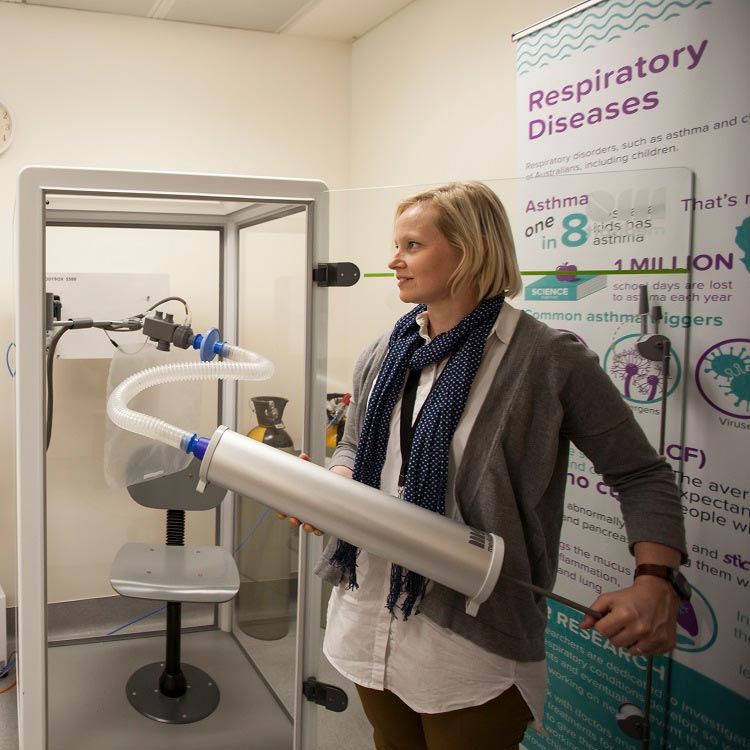Search
Research
Nasal airway epithelial repair after very preterm birthNasal epithelial cells from very preterm infants have a functional defect in their ability to repair beyond the first year of life, and failed repair may be associated with antenatal steroid exposure.
Research
Treatment with inhaled aerosolised ethanol reduces viral load and potentiates macrophage responses in an established influenza mouse modelTreatment options for viral lung infections are currently limited. We aimed to explore the safety and efficacy of inhaled ethanol in an influenza-infection mouse model.
Research
Geldanamycin treatment does not result in anti-cancer activity in a preclinical model of orthotopic mesotheliomaMesothelioma is characterised by its aggressive invasive behaviour, affecting the surrounding tissues of the pleura or peritoneum. We compared an invasive pleural model with a non-invasive subcutaneous model of mesothelioma and performed transcriptomic analyses on the tumour samples.

News & Events
Very preterm babies at risk of declining lung function throughout childhoodA The Kids Research Institute Australia study published in The Lancet Child & Adolescent Health has found that survivors of very preterm birth face declining lung function
Research
Biodiesel exhaust-induced cytotoxicity and proinflammatory mediator production in human airway epithelial cellsCanola biodiesel exhaust exposure elicits inflammation and reduces viability of human epithelial cell cultures in vitro when compared with ULSD exhaust exposure
Research
Use of a primary epithelial cell screening tool to investigate phage therapy in cystic fibrosisThis study demonstrates the feasibility of utilizing pre-clinical in vitro culture models to screen therapeutic candidates
Research
The potential of antisense oligonucleotide therapies for inherited childhood lung diseasesAntisense oligonucleotides are an emerging therapeutic option to treat diseases with known genetic origin. In the age of personalised medicines, antisense oligonucleotides can sometimes be designed to target and bypass or overcome a patient's genetic mutation, in particular those lesions that compromise normal pre-mRNA processing. Antisense oligonucleotides can alter gene expression through a variety of mechanisms as determined by the chemistry and antisense oligomer design.
Research
Previous Influenza Infection Exacerbates Allergen Specific Response and Impairs Airway Barrier Integrity in Pre-Sensitized MiceIn this study we assessed the effects of antigen exposure in mice pre‐sensitized with allergen following viral infection on changes in lung function, cellular responses and tight junction expression.
Research
Defective cell migration as a mechanism of dysregulated asthmatic airway repairThe findings from this study show that in children with asthma this protective barrier is different from children without asthma.
Research
The airway epithelium is a direct source of matrix degrading enzymes in bronchiolitis obliterans syndromeLong-term survival after lung transplantation is hindered by the development of bronchiolitis obliterans syndrome (BOS).
